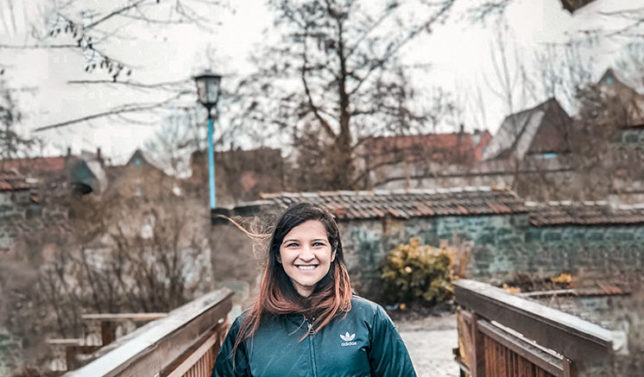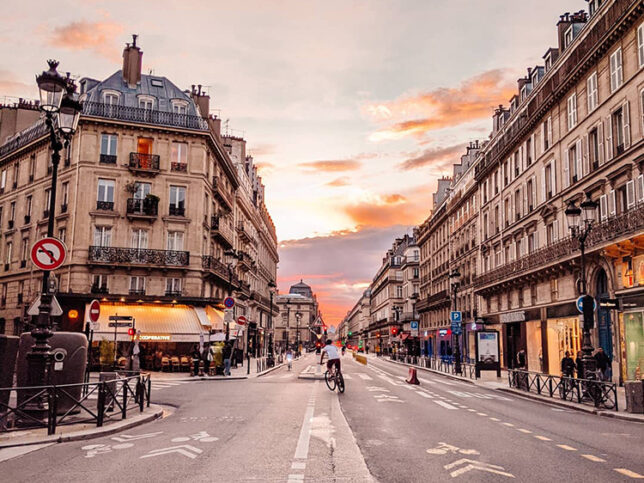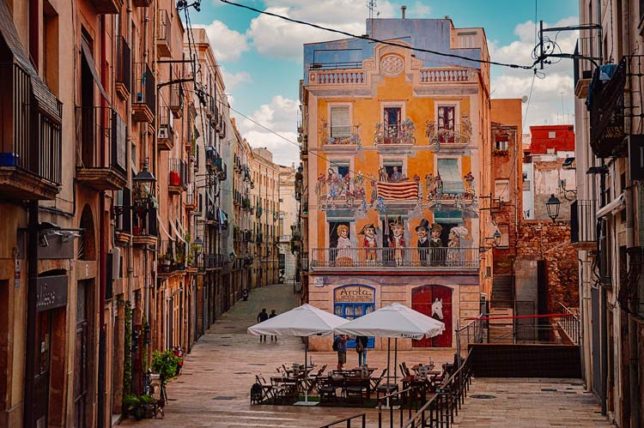Portugal instantly invokes images of ports, the land of sailors and explorers, gorgeous sea views and loads of sunshine. But the country is so much more than just that. For instance, did you know:
- Piri piri originated in Portugal
- Portugal is the largest producer of cork in the world
- Portugal is the home of port wine
- The people are incredibly friendly and helpful
- Pretty much everyone speaks English so it’s a massive win!
Portugal also has excellent beaches, beautiful vantage points for the most delicious views, stunning architecture that’s a curious blend of the Romans and the Moors – think bright colors, tile fronted buildings, rounded arches, honeycombed edges, and oh, the symmetry!
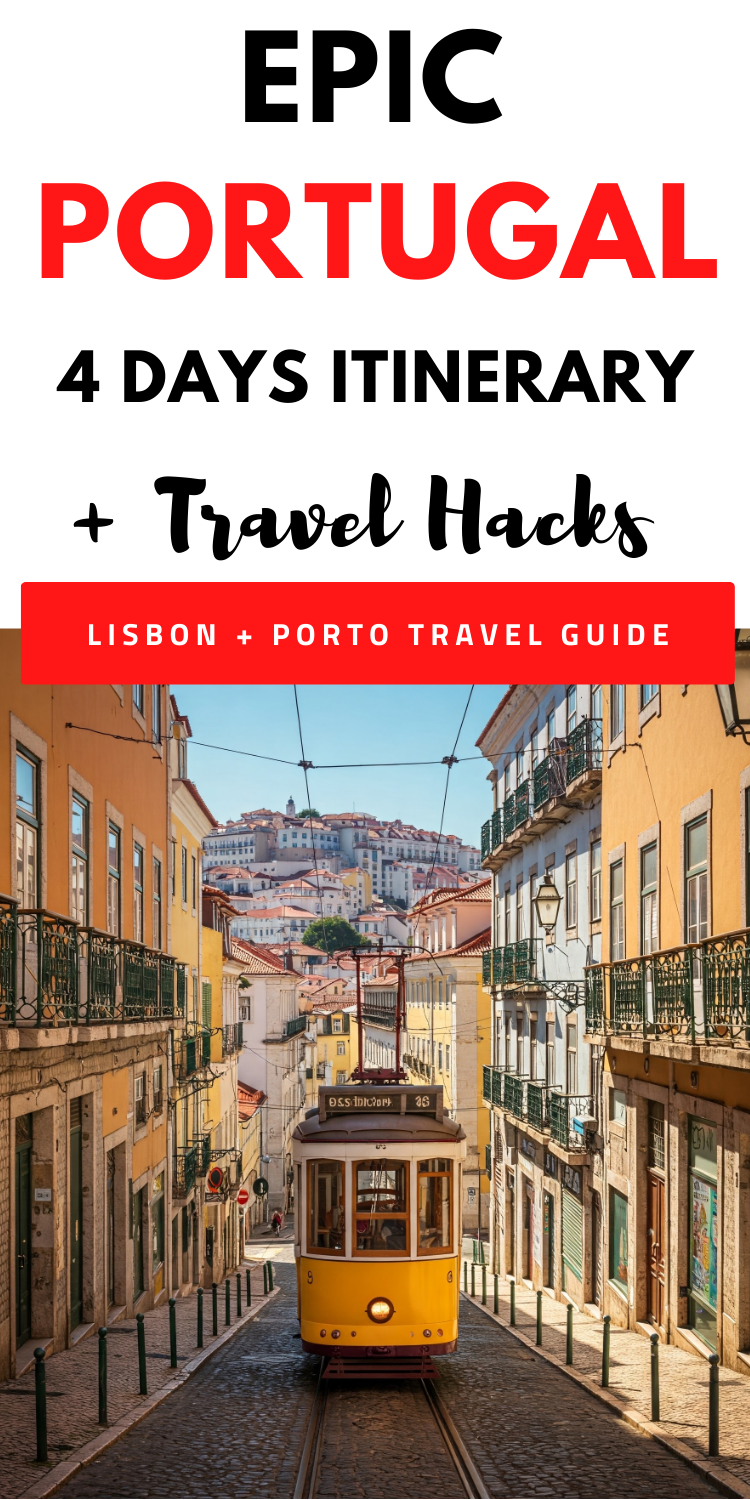
GETTING AROUND IN PORTUGAL
Portugal has a pretty decent bus service. Lisbon and Porto, the two largest urban cities, have modern and air-conditioned underground metro systems. The quintessential trams are quite popular, too. If you wish to rent a car, you can get some great offers here. A heads up though: Drivers in Portugal have a bit of a reputation and it may not be the safest place to drive in, especially if you’re not comfortable with driving on the right side of the road.
A bunch of taxi cab services are also available, like Uber and Bolt. There’s another local taxi-on-call service called Kapten which is popular and reliable.
BONUS TIPS FOR YOUR FIRST PORTUGAL VISIT
- This applies more to Lisbon than other cities: In the touristy areas, it’s quite common to be approached by peddlers selling drugs. It is best to avoid buying drugs off the road, as it might land you in trouble and you really don’t know what’s being sold. If you find yourself in this situation, just say no, avoid making eye contact and keep walking along.
- As in most European countries, you’ll end up walking quite a bit in Portugal. The terrain can be challenging, particularly in Lisbon, as it is very undulating. Goes without saying, but make sure you carry a good and comfortable pair of walking shoes!
- At most restaurants, it is common practice to bring some appetizers like olives, bread, etc. to your table. Newsflash: these are not free! If you don’t want them, just ask the server to take them away.
- If you’re vegan or even vegetarian, be prepared for some potential struggle to find food in Portugal. Fish is a staple in Portuguese cuisine and there’s a possibility you don’t find a single non-meat item on the menu of many restaurants.
That being said, there are always great options on Happy Cow (an INCREDIBLE website/app which lists vegan/vegetarian restaurants near you), and it doesn’t hurt to maybe look up the menu of a certain joint beforehand to be sure you’ll have choices of your liking.
PORTUGAL ITINERARY FOR 4 DAYS
Day 1 and 2: Lisbon
Sitting on seven hills, at the edge of the Atlantic Ocean, Lisbon is a paradigm for an interesting blend of ancient ruins and contemporary culture, coming together in the most effortless way.
BUT that’s not the first thing you’ll notice once you’re there. What you’ll instantly experience is shortness of breath and absolute remorse for not having taken my advice seriously when I told you to carry comfortable walking shoes (refer to protips above)!
Lisbon’s terrain is full of highs and lows; it’s like a continuous hike everywhere, but the stunning setting of the city sure helps take the focus away from the blood, sweat and tears! The super chill people, warm sunshine (for most of the year) and cultural richness are added bonuses!
Lisbon Cards
The Viva Viagem is a travel card that allows you to use all public transport including buses, metro, trams and trains. The card costs EUR 0.5 and can be topped up to an unlimited amount. You can procure the card at machines located at metro stations, airports, or just ask at the ticket office!
Although I have to say, cabs work out pretty well, too. Especially with the signup discount on Kapten (if you use the code TANBIN4)!
Instead of the Viva Viagem, you can also get the Lisbon Card. At just EUR 20 a day, it guarantees free entry to all Lisbon attractions and unlimited public transport!
Where to Stay in Lisbon
We had a great stay at Intercontinental Lisbon. As always, they delivered the most comfortable experience, great food and a dedicated effort to acknowledge any complaints or grievances and act on them. You can find more amazing hotels at fantastic prices here.
Lisbon obviously has awesome hostels, my favorite being Inn Possible and Lisbon Lounge.
You can also book a place on Airbnb and get upto EUR 30 off using this link!
Things to Do in Lisbon
-
Ride Tram 28
If you google Lisbon, chances are you’ll find multiple versions of this very recognizable yellow box-like tram.
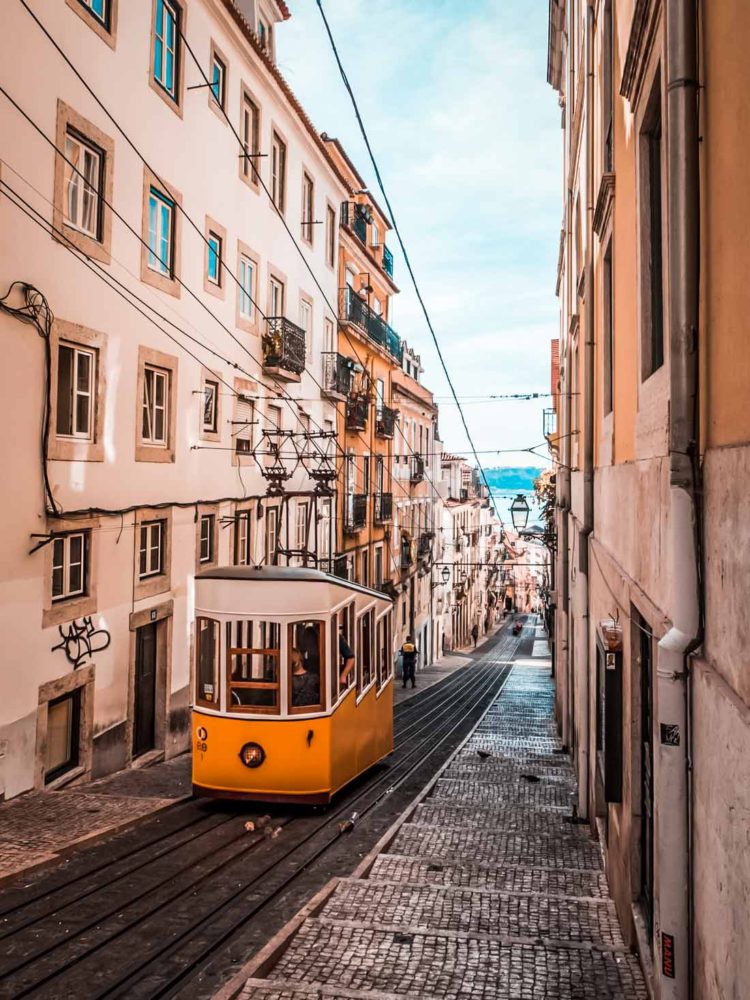
One of the three traditional tram lines in the city, tram line 28 finds its way through all the historic and prominent spots around the Lisbon Old Town. The journey in the tram can be rickety and noisy, but it’s great for catching unique glimpses of the beautiful city.
Taking the tram ride is also a way to get a slice of the local life in Lisbon; a lot of daily commuters travel by tram to get around.
You can ride the tram with your Lisbon card, or buy a ticket at a vending machine (in train stations, sometimes at tram stops).
IMPORTANT: The vending machines don’t accept notes and often don’t have change either. Make sure you carry sufficient change of all denominations when traveling.
-
Explore the Streets of Alfama
This quaint neighborhood of Lisbon is definitely the highlight of the city, for me!
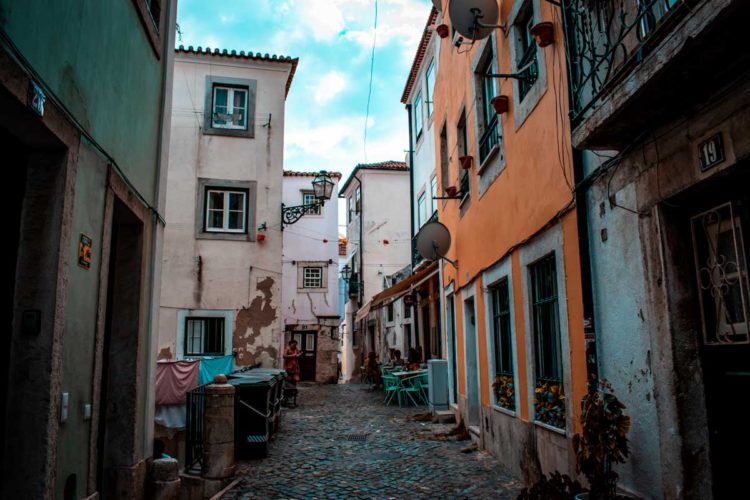
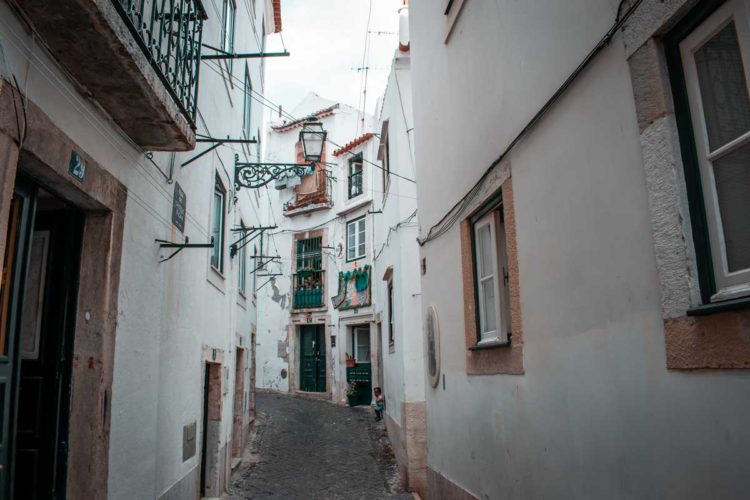
Walk through the charming maze of cobbled streets and crumbling houses, and you’ll get to experience Lisbon in all its ruggedness; cute tiny doors, Moorish tiled buildings, tons of graffiti, the odd bicycle parked on the porch of a ramshackle old house, a woman crooning beautiful verses of Fado (more on that, below).
Alfama is an experience, and it’s a must for your Portugal itinerary!
-
Catch Great Views at Portas do Sol
Climb up to the viewpoint at Portas do Sol in Alfama where you can catch panoramic views of the entire city – yes, those typically red-roofed houses stacked together, overlooking the sea – the quintessential Lisbon postcard picture. There is also a bar with a terrace so you might as well grab a drink from there and enjoy the view!
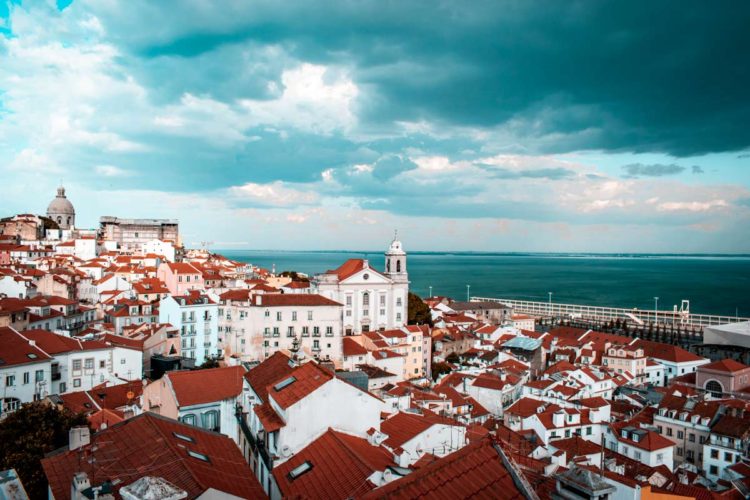
Stop by at St. George’s Castle
Castelo de São Jorge or St. George’s Castle sits at half a km walk from the Portas do Sol viewpoint, and is visible from almost anywhere in the city, thanks to its elevated placement. The castle has remants dating back to the 6th century and affords amazing views of Lisbon, so a double win!
-
Have a Ginjinha Shot
Ginjinha is a sweet and spicy liquor made of cherries and typically served in a shot glass. It’s available at most bars and restaurants but you can also find standalone sellers serving ginjinha from a cart (especially in Alfama).
Make sure you have a shot of this! It’s a very local experience for your time in Portugal.
Here is an excellent post that packs in all you need to know about ginjinha in Lisbon, and even has a bunch of recommendations.
-
Experience the Nightlife at Bairro Alto
Lisbon has a bustling nightlife, and it truly comes alive in the Bairro Alto district.
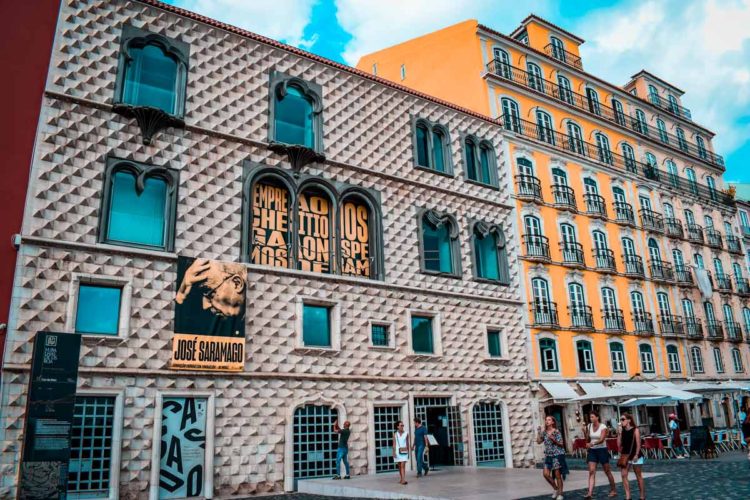
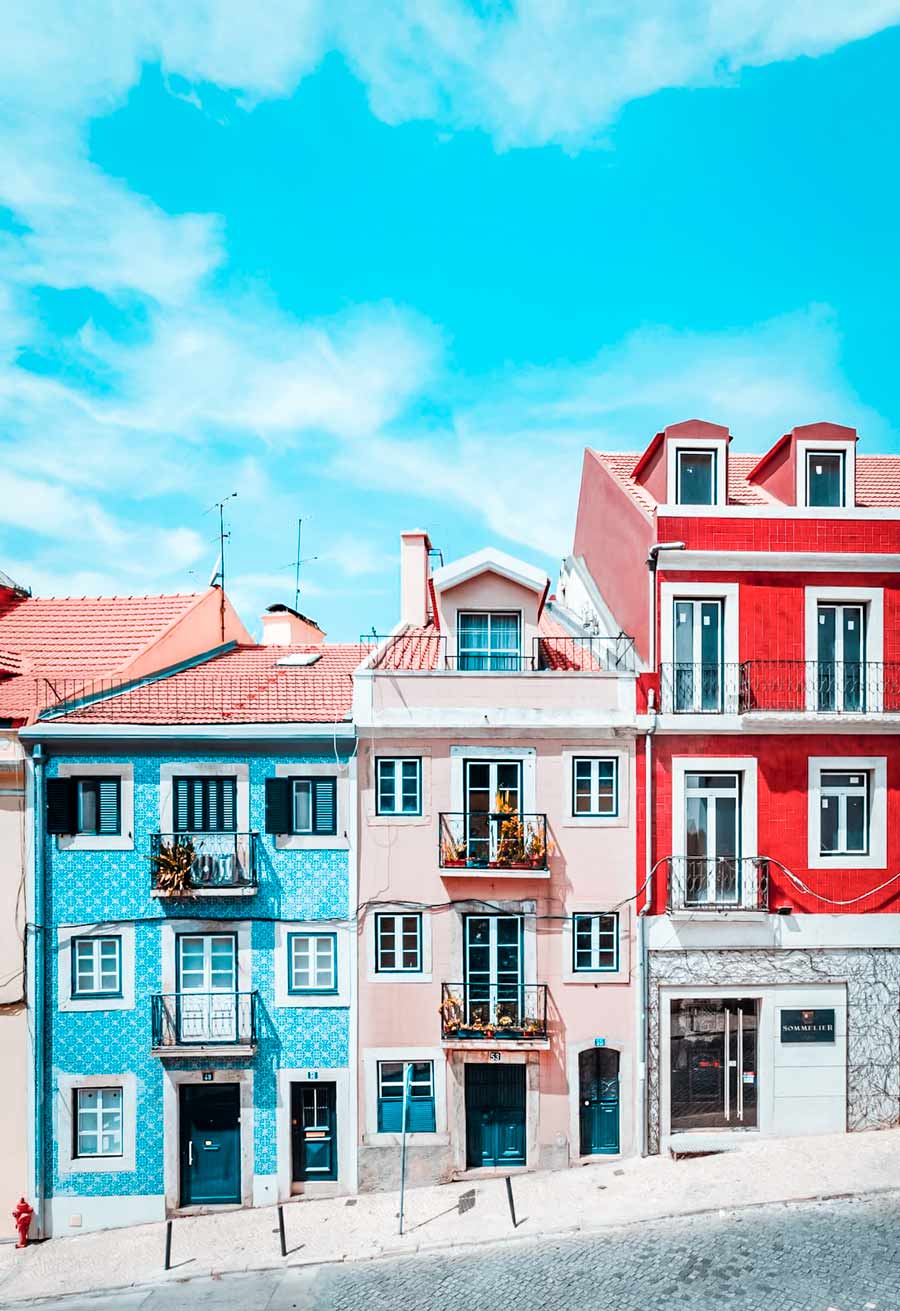
By day, there’s a notably bohemian vibe in the area, with colorful facades and vivid street art; by night, the bars and clubs start filling up with music and palpable energy. As the evening progresses, you’ll see a lot of tourists and locals outside bars, drinking from plastic cups, having a good time. My absolutely favorite bars in Bairro Alto are Cinco Lounge and A Capela. There are also a few awesome Fado houses offering a traditional Portuguese experience.
-
Listen to some Fado
While taking us through the narrow streets and back lanes of Alfama on our walking tour, the guide stopped at this curious, decrepit square, where a woman was passionately singing in a corner, and a man strumming along on a pear-shaped guitar. He went on to tell us about “Fado”, a music genre native to Portugal.

Literally meaning ‘fate’, Fado is a song that narrates the story of the singer’s life. Born in the working-class neighborhoods of Lisbon, story has it that these songs were initially sung by courtesans to solicit men, which gave Fado a bad reputation. However, over the course of time, people started paying heed to what these women were singing about, and they realized they were sharing their tales, their struggles, longings, little pieces from their story strung together in a lyric of pathos.
Men started heading to Fado houses just to listen to the stirring, honest musical renditions, people started penning their own verses, and Fado came to be what it is, today.
It’s amazing, don’t you think, how the deepest scars make the most beautiful stories?
Fado is music that depicts the soul of Portugal, and it’s truly an experience in Lisbon. There are amazing Fado houses everywhere but Alfama is where you want to go. Just sit at one of the unobtrusive, non-shouty neighborhood cafes and enjoy the music!
Make a Tour to Torre de Belem
If you can spare a few hours, make a trip from downtown to Torre de Belém, or Belém Tower, a modern era fortification tower at the edge of Lisbon, standing at the southern tip of Lisbon.
The 16th century was the age of exploration, and the Portuguese are known to have been the greatest explorers in history. The Belém Tower was used as a point of embarking and disembarking for the Portuguese explorers and sailors in their journey through the sea. In a sense, the tower represents a sort of a gateway into Portugal from the water.
The Belém Tower is a cornerstone monument for Lisbon, and a huge historical landmark in Europe.
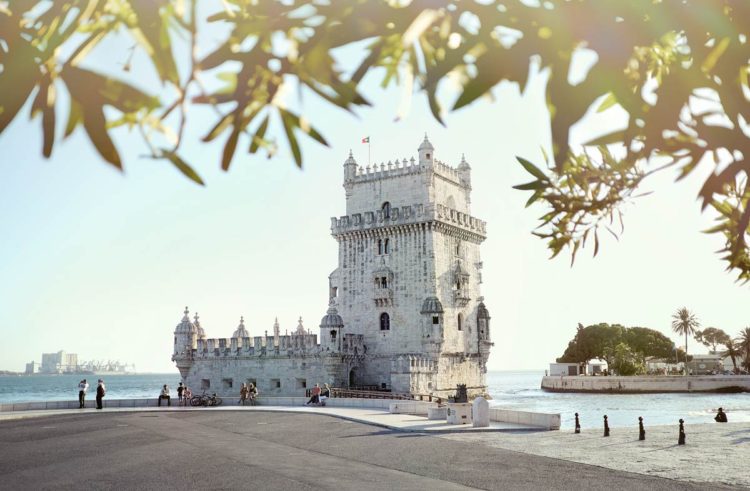
There are infinitely long queues at all times; we just skipped going in as we had neither the time nor energy to wait it out. If you’d like to go inside the tower, you can buy the ticket from this link and skip the long, exhausting queues.
There’s also a park next to the tower with tons of street artists and people getting along in their everyday lives. You can also visit the Navy Museum just a few hundred meters away.
PROTIP: Rent a bicycle to get here for amazing views along the way. You can also get a cab or use public transport.
-
Visit the Ultimate Food Court in Lisbon
Visiting a food court is probably not something you’d consciously put on your Portugal itinerary, but you must visit the Mercado da Ribiera in Lisbon.
As you enter this gigantic food hall, you’ll find a lot of stations selling fresh produce. Keep walking along, and there are tons of restaurants and bars with exhaustive menus and a giant seating area. You can find something for everyone here.
Very importantly, there are FREE and surprisingly clean public restrooms (which is super rare in Europe)!
Day 3 and 4: Porto
Portugal’s wine city, the home of port wine, Porto has this unique shabby-chic vibe that is hard to replicate.
From its scenic setting at the Duoro River to the run-down look and feel of the neighborhood of Baixa, Porto is a beautiful city that will permanently etch a picture of its bright blue azulejos in your memory.
Where to Stay in Porto
Highly recommend the Holiday Inn Express, guys! Bang in the city center, very close to where all the action is. Also very economical.
Porto also has great hostel options, two of which have really good locations and reviews:
- Yes! Porto Hostel: Bang in the city center, very inexpensive, has amazing parties and events to get travelers together
- Gallery Hostel Porto: This hostel has its very own art gallery! Tops out on aesthetics, very modern, free breakfast, free walking tours
Things to do in Porto
Drink Port Wine
Porto may owe its name (originally called Oporto meaning “the port”) to the location of the city, but Portugal’s second-largest city is known the world over for its delish wine.
Port wine is a special fortified red wine made with grape spirits sourced from the Duoro valley. It has an atypical sweet, lingering taste, and is mostly consumed as a dessert wine, although there are dry, semi-dry and white varieties as well. Even non-wine drinkers are encouraged to try some port wine as it is so different from the usual!
-
Visit a Wine Cellar
One way to enhance your port wine experience is to visit a cellar and see how this brilliant drink is prepared. After the fermentation process, the wine is stored and aged for several years, before being bottled.
A lot of wine cellars are actually located on the other side of the river from Porto, in another city within the Porto district, called Gaia. But it’s connected to Porto by a bridge, and is just a few steps away so fret not!
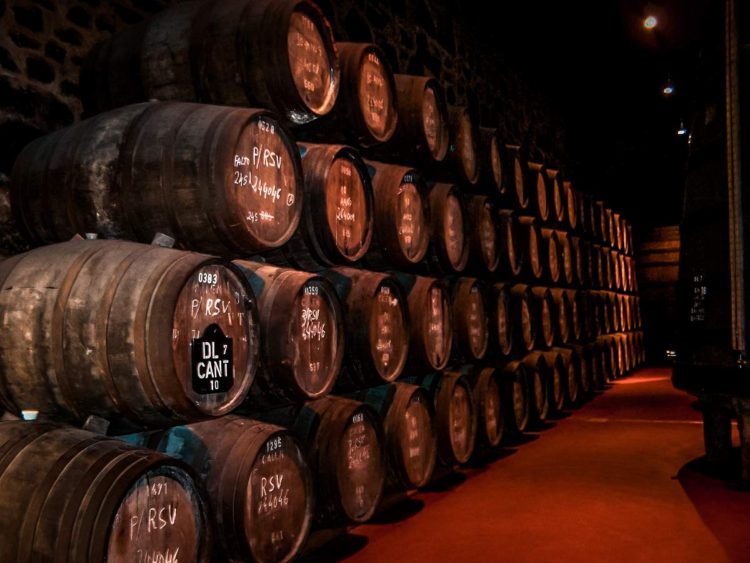
Tons of cellars offer tasting tours and walks through their barrel housings, so if you’re really feeling it, sign up for wine tasting tour and do some cellar hopping! I did this awesome tour on Get Your Guide and had a winetastic experience! (I’m the queen of puns)
My absolute best recommendation for a wine tour (and drinking/buying wine souvenirs to carry back home) is the Cálem Wine Cellar. The Cálem cellar tour is inexpensive, amazing and includes a guided museum tour and delicious wine sample tastings.
-
Admire the Azulejos
The Azulejos are hard to miss in Porto – these gorgeous blue-white glazed tiles are ubiquitous. You’ll spot them decorating the facades of churches and the interiors of train stations. You literally don’t have to try looking for them – they’re everywhere!
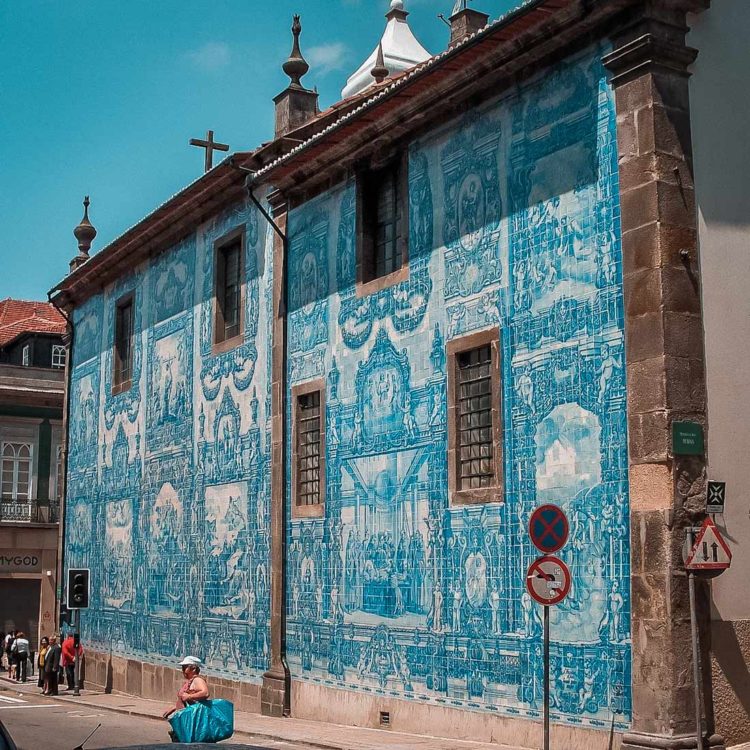
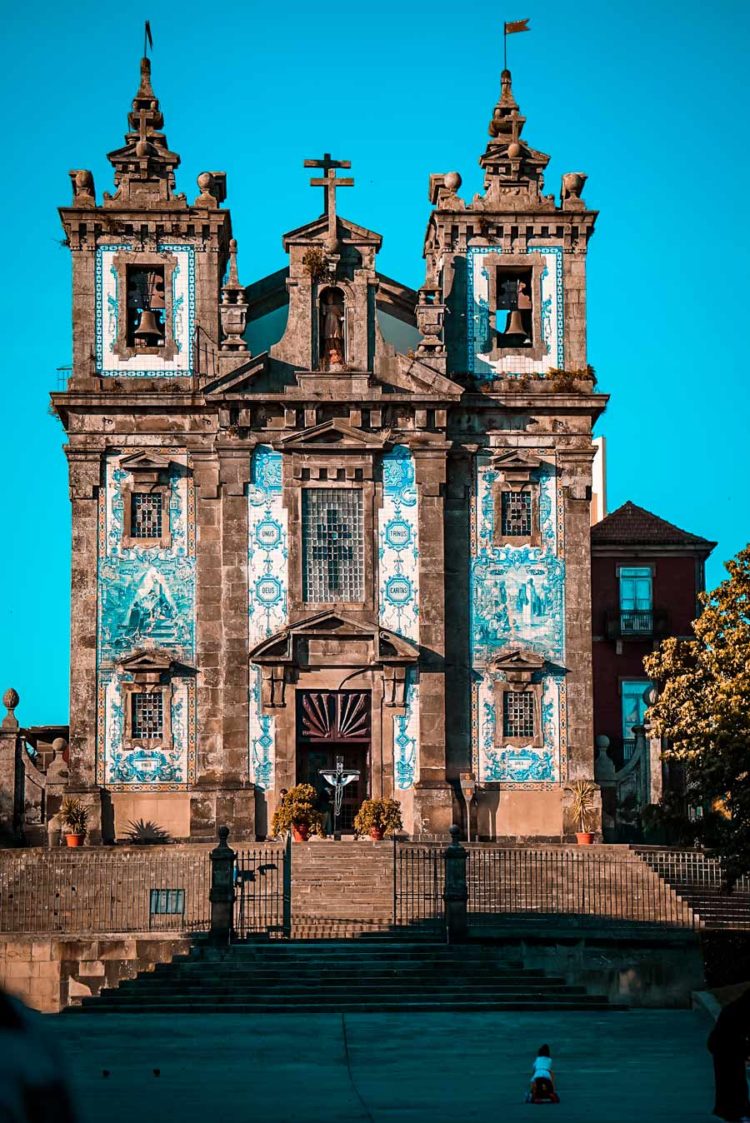
Azulejos are native to Spain and Portugal, but can be found in certain other countries like Italy, and also former colonies in the Americas, the Philippines, Goa (India), etc.
The word Azulejo literally means ‘polished stone’ and the art, by itself, has a predominantly Arabic origin. The tiling aesthetic was brought to Portugal during the Moorish rain, but the depictions on these azulejos chronicle strategic events in the history of Portugal.
-
Visit the Most Beautiful Train Station in the World
São Bento railway station is a stunning 20th century marvel adorned with blue-white azulejos spanning its entire enclosure!
As your gaze moves along the tiles, you’ll notice there is an abundance of azulejos – from one wall to the other. The station has 20,000 tiles chronicling the history of Porto, with the walls along the entrance depicting the four seasons in human form. The artwork is beyond brilliant!
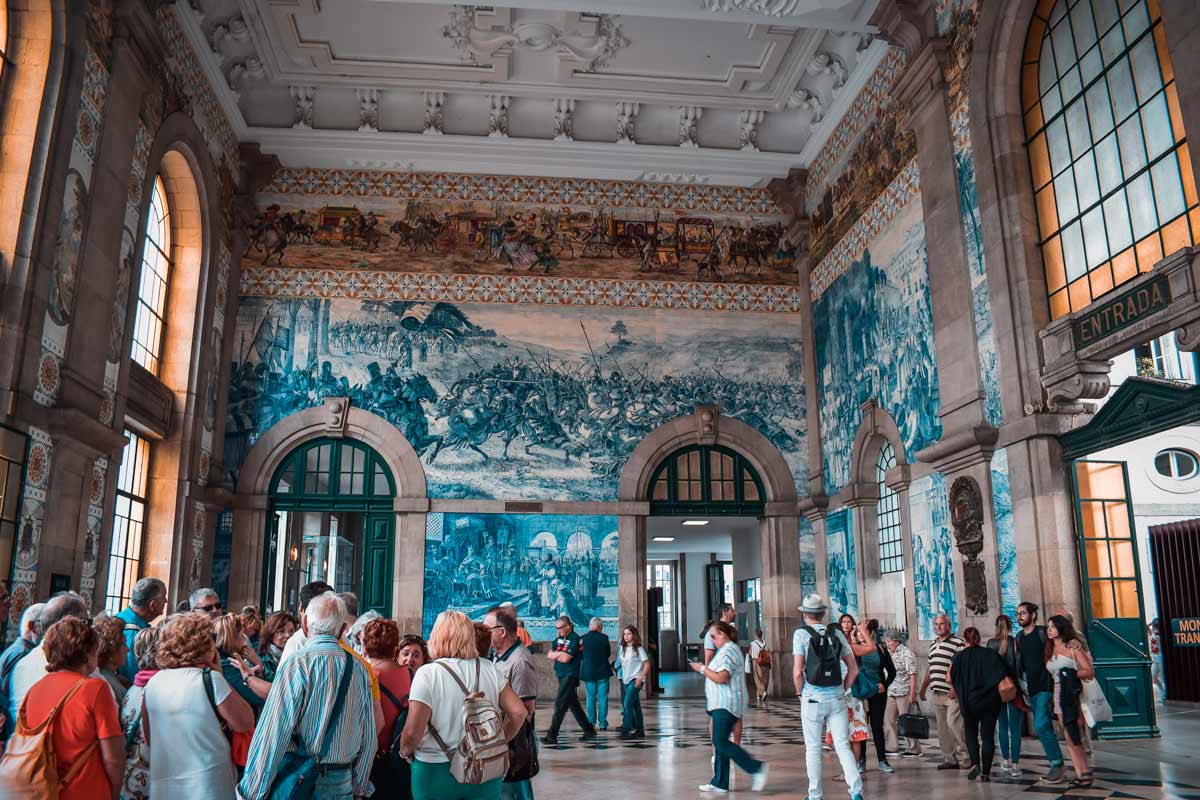
Primarily a 16th century monastry, the building got burned down in a fire and was converted to a railway station, some centuries later, to expand and support the transport system.
-
Visit the Most Beautiful McDonald’s in the World
You’d never imagine that there’s a benchmark for McDonald’s aesthetic around the world, and it really maxes out in Porto!
While McDonald’s outlets are typically featureless and pretty uniform, this one will charm you with its mere facade. As you enter, feast your eyes on a gilded ceiling, crystal chandeliers and stained glass windows.
The restaurant is located in the heart of the city, in the bustling Liberdade Square. This used to be a coffee shop in the 1930s, and they apparently ran out of business and sold the building to McDonald’s.
I was so mesmerized that I forgot to take pictures (which is bad but kinda good, too ;)) So you’ll have to head there to witness the royalty and maybe even pick up some McFries, while you’re at it!
-
Find Peace at the Praca de Ribeira
A lovely, bustling square with lots of people going about their day, the cacophony of sellers touting postcards and other odds and ends, a guy playing the guitar, another breakdancing to an enthusiastic audience of passersby – the Praca de Ribeira is a must-visit for your Portugal itinerary.
Situated on the banks of the Duoro River, the Ribeira is great for a long, reflective walk, an early morning or late evening run, or just for sitting at one of the benches upfront and maybe reading a book, while watching seagulls take flight.

I don’t recommend eating at any of the restaurants at the Ribeira, as I’ve been told they’re massive rip offs. Maybe you could get a drink (or even better, carry your own) and sit along the river.
-
Grab a Drink in Gaia by the Duoro River
The Ribeira is a popular spot but the Porto postcard picture you often see everywhere is actually shot from across the river, in a little Portuguese city called Vila Nova de Gaia.
If you’ve followed this Portugal itinerary to the T so far, chances are you’ve already been in Gaia – when you visited the Cálem wine cellar! All port wine cellars are in fact in Gaia.
Gaia is connected to Porto by the Dom Luís I Bridge built by the co-founder of the Eiffel Company (yes, of the Eiffel Tower fame). It has two levels; the upper one is for railways while the lower level is meant for road traffic and pedestrians.
Once you arrive in Gaia, I recommend walking up to the monastery, just across the bridge, and enjoying some breathtaking sunset views at the terrace there.
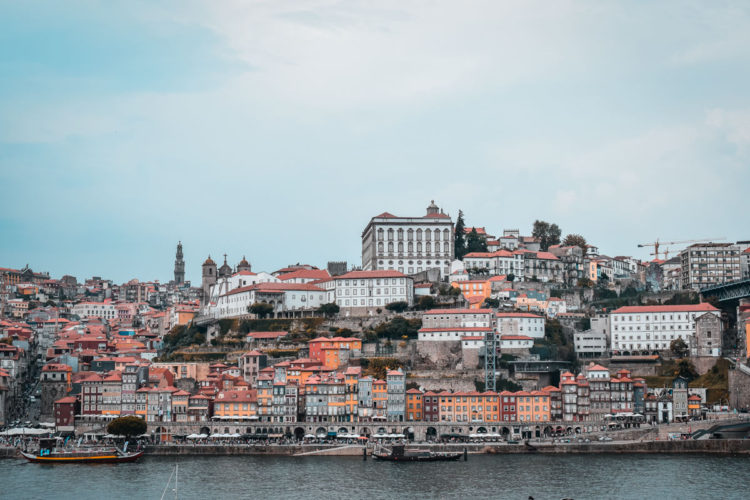
Along the river on the Gaia side, there are some really nice restaurants that have the perfect setting and amazing food. I especially recommend UVA by Cálem – the wine IS AWESOME as has been previously established. The food is also great, and their menu is not too elaborate but very accommodating for vegetarians and vegans.
Admire the Livraria Lello
This is a legendary bookstore which was frequented by JK Rowling during her years working as an English teacher in Porto. Apparently, she found the inspiration to write Harry Potter in this very bookstore!
Honest Advice: Tons of blogs online will tell you to visit the Livraria Lello, but I found it humoungously underwhelming. For starters, there’s always a LONG queue waiting to get in. Besides, the entry fee is 5 euros which can be redeemed against a book purchase, but there isn’t much choice in English books. And did I mention, it’s VERY, VERY crowded. Completely packed. So you won’t get a good picture for Instagram, either (unless you’re the first person to get in when it opens. Even then, so not worth it!) #don’tdoitforthegram 😉


